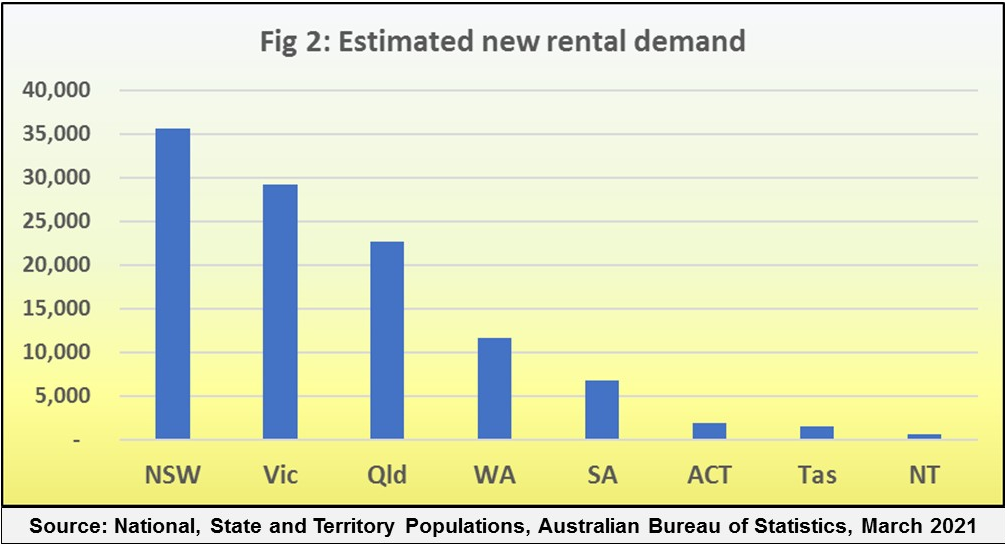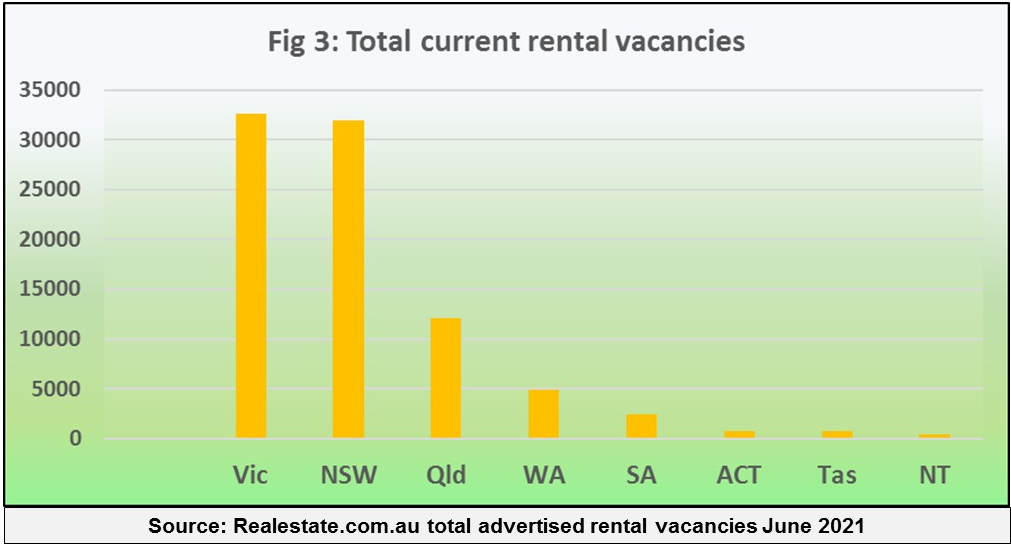Cash flow booms are coming
The closing of our national borders to overseas arrivals is impacting population growth in some States and Territories, but is also causing cash flow booms for property investors in others. John Lindeman reveals where to find them.
It’s understandable that much of the focus on international border closures caused by the pandemic has been negative, because lower population growth ultimately means less demand for housing. For example, we know that housing demand in locations where overseas students, tourists and migrants were renting prior to the pandemic has been hit hard, especially in Melbourne’s inner urban unit market.
But, looking at the positive side, the latest ABS data indicates that population growth in States and Territories less reliant on overseas arrivals has been quite strong, as Figure 1 shows.

Since our national borders were closed early in 2020, Queensland’s population has grown more than any other State with a net increase of 68,200 residents over the last year. The State’s annual population growth rate of 1.3% is now the highest of all our States.
Victoria, on the other hand, which had the largest increase in population before borders were closed, has slipped back to third spot, and its annual population growth rate of just 0.7% has fallen below that of most other States.
This dramatic change is mainly due to the collapse of overseas migrant arrival numbers, especially to States such as New South Wales and Victoria. but a significant number of people are also relocating from the southern States to Queensland.
Nearly half of Queensland’s new residents relocated from New South Wales and Victoria, meaning that their loss was Queensland’s gain. This new trend is likely to continue until well after our international borders re-open as the popularity of our major population centres undergoes a significant realignment.
In years gone by, Queensland was a popular retiree destination, but we are now seeing large numbers of young people moving there. Many of them are recent immigrants who have decided to move once again. They don’t have the personal, family or workplace ties that deter people from relocating and they are attracted to Queensland’s climate, recreational lifestyle, employment opportunities and cheaper housing costs.
Most of Queensland’s new households are renters
The significance of these numbers for property investors is that most of the new households are renters. Figure 2 shows that rental demand is growing in all our State and Territories, with the numbers of new renting households in New South Wales and Victoria being higher than other States purely because they are the biggest State in terms of population. The real show stopper is Queensland, because rental demand there is rising far more strongly than in the other States.

These numbers become more significant for property investors when we also look at the supply of rental properties, that is, the number of advertised rental vacancies in each State and Territory. I have done this in Figure 3, which shows that both New South Wales and Victoria are well out in front in terms of rental vacancies.

Rental vacancies are created when tenants move out, or when investors buy newly built or owner-occupied properties. To compare the overall rental demand to the available supply, we can use the population growth figures provided by the ABS and compare them to the number of rental vacancies in each State and Territory. I have done this in Figure 4, which reveals the States and Territories where rents are likely to rise and those where they may fall.

The comparison reveals that Queensland has a huge undersupply of rental properties compared to the demand for them, followed by Western Australia, South Australia, New South Wales and the other State and Territories. Victoria is the only State with an overhang of rental vacancies.
This “top down” type of analysis indicates where asking rents are likely to rise and fall until our national borders are open again, but only in very general terms. There could be locations in Victoria with rental shortages, just as there could be some suburbs in Queensland with high numbers of rental vacancies compared to the demand. Even so, rents are much more likely to rise in Queensland and Western Australia than they are in the other States and Territories.